Flowers with peacock feathers
Careful conservation treatment has restored the rich, sumptuous colour of Margaret Coen’s gorgeous still-life painting, which now has a new frame befitting the style of this Sydney Modern artist.
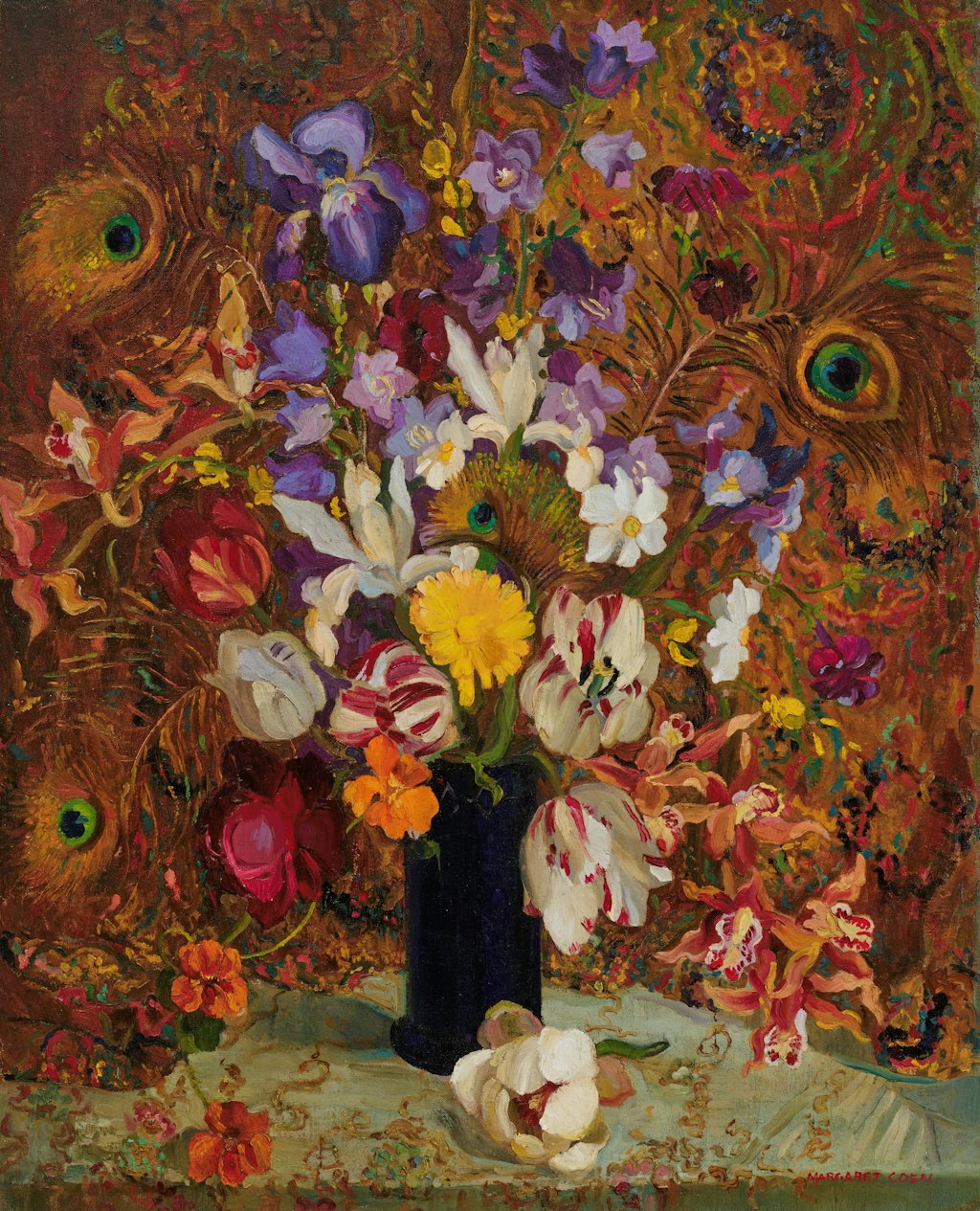
Margaret Coen Flowers with peacock feathers c1944, Art Gallery of New South Wales © Estate of Margaret Coen
Margaret Coen Flowers with peacock feathers c1944, Art Gallery of New South Wales © Estate of Margaret Coen
Born in 1909, Coen is known for her long career as a watercolour painter. She worked as a commercial artist from the 1930s and was a regular exhibitor with the Royal Art Society, through which she became recognised for her trademark watercolour landscapes and still-life paintings, particularly her luminously coloured flower arrangements. Her reputation was consolidated when the Art Gallery of New South Wales bought two of her watercolours: Oriental harmony in 1938 and The glade in 1943.
Flowers with peacock feathers c1944 was gifted to the Art Gallery in 2019 by the artist’s daughter, Meg Stewart, and is a significant work as it demonstrates Coen’s shift in mediums during the 1940s. Painted in oils, the artwork depicts a baroque still-life arrangement of brightly coloured flowers with a backdrop of peacock feathers and patterned wallpaper. Vibrant colours are richly layered in thick, impasto brushstrokes to produce a lavish overall composition.
However, when the painting was acquired by the Art Gallery, it was covered in a heavily discoloured varnish layer. This thick, darkened layer had caused an overall yellowing, obscuring the brilliant paint colours and crisp brushstrokes beneath. The varnish was physically degraded too, with many cracks and surface disruptions which dulled the work’s overall appearance. The painting was also framed in a non-original commercial moulding, in the style of the 1980s, which did not suit the work or reflect the period of its creation.
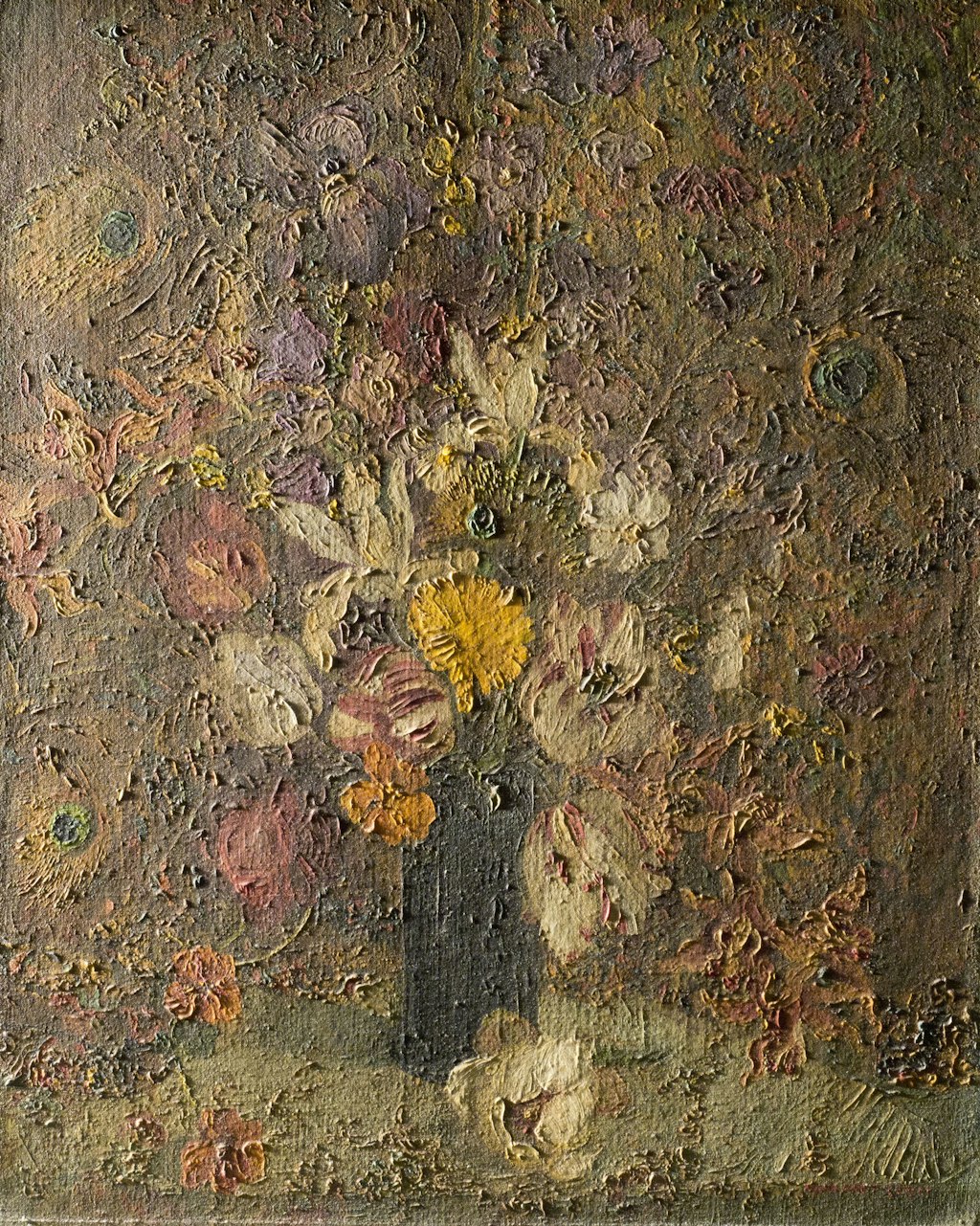
The painting, before conservation, under raking light, which shows the heavily textured paint surface
The painting, before conservation, under raking light, which shows the heavily textured paint surface
The main aim for conservation treatment was to remove the aged varnish and restore the artwork’s visual integrity, to make it ready for display. Treatment began by cleaning a layer of dust and grime, which had accumulated on the surface. While there was little visual change to the work in this stage, it was important to remove as much dirt as possible so that even cleaning results could be achieved when the varnish layers were removed.
A series of solvent tests was carried out to determine the best solution for varnish removal. Once an appropriate solution was found, it was tested in different areas of the painting to make sure it was safe to use without endangering any of the paint underneath, because each pigment has unique properties and responds to solvents in different ways. And to ensure cohesive cleaning results, it was important to make sure at the start that the varnish could be safely removed from all areas of the painting.
Varnish layers were then removed using cotton swabs and solvents. In heavily textured areas, the varnish had pooled in the low points of the impasto brushstrokes, so a gelled solvent system was formulated for targeted application and to limit repeated solvent exposure in the adjacent, already-cleaned areas.
Progress was tracked with ultraviolet imaging, which revealed the brilliant fluorescence of the original paint layers beneath, such as the characteristic bright orange that indicates rose madder – a traditional, red ‘lake pigment’.
A conservation-grade varnish was sprayed onto the painting to fully saturate the colours and restore a sense of depth. Finally, small paint losses were filled and inpainted with reversible retouching pigments. The result: the original surface was safely recovered and the artist’s dazzling colours and composition were restored.
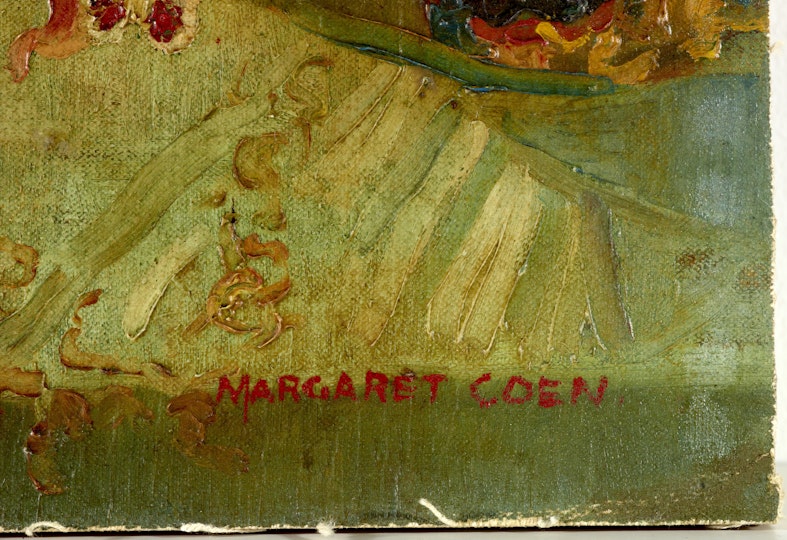
Initial solvent spot tests for varnish removal at right edge
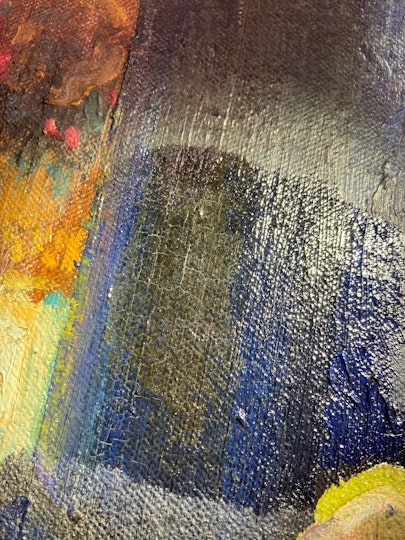
Solvent cleaning to remove degraded varnish, exposing bright blue original paint
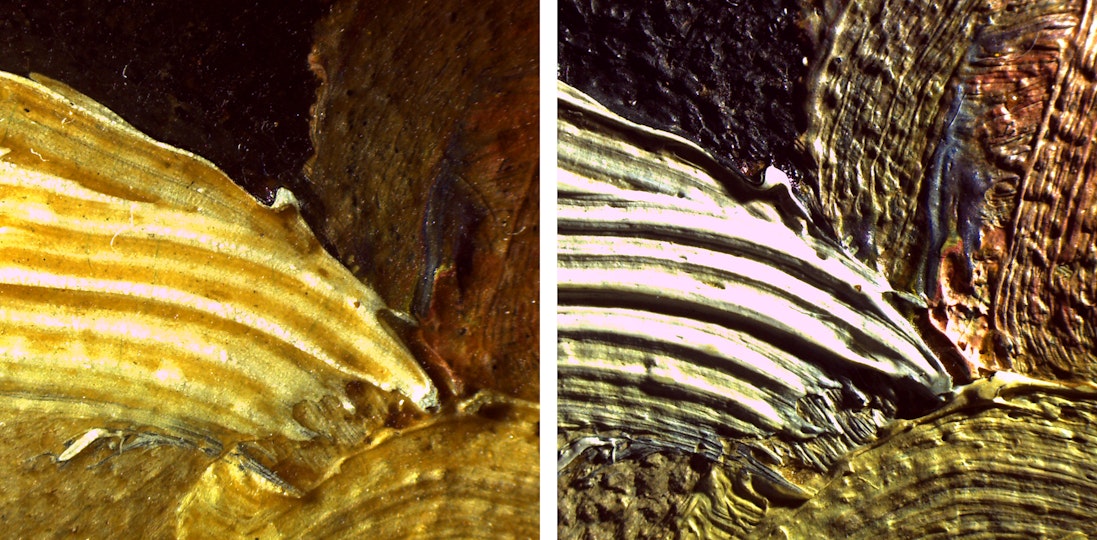
Highly magnified details of varnish removal, showing return to crisp paint texture (right)
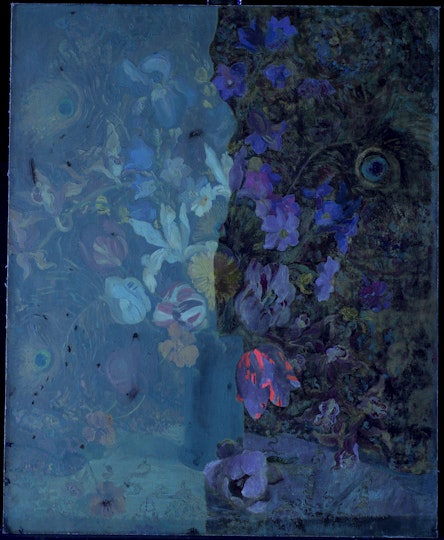
Ultraviolet photo during treatment, with varnish removed from the right half
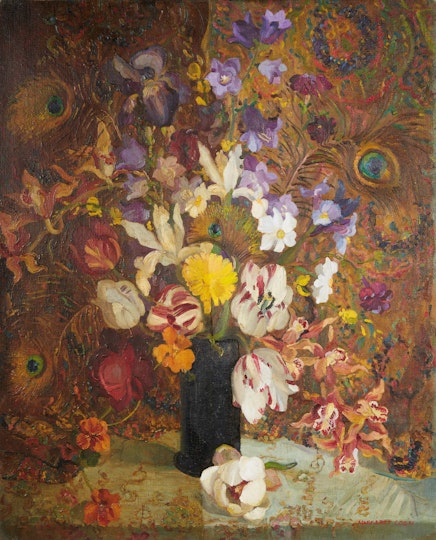
During treatment, with varnish removed from the right half
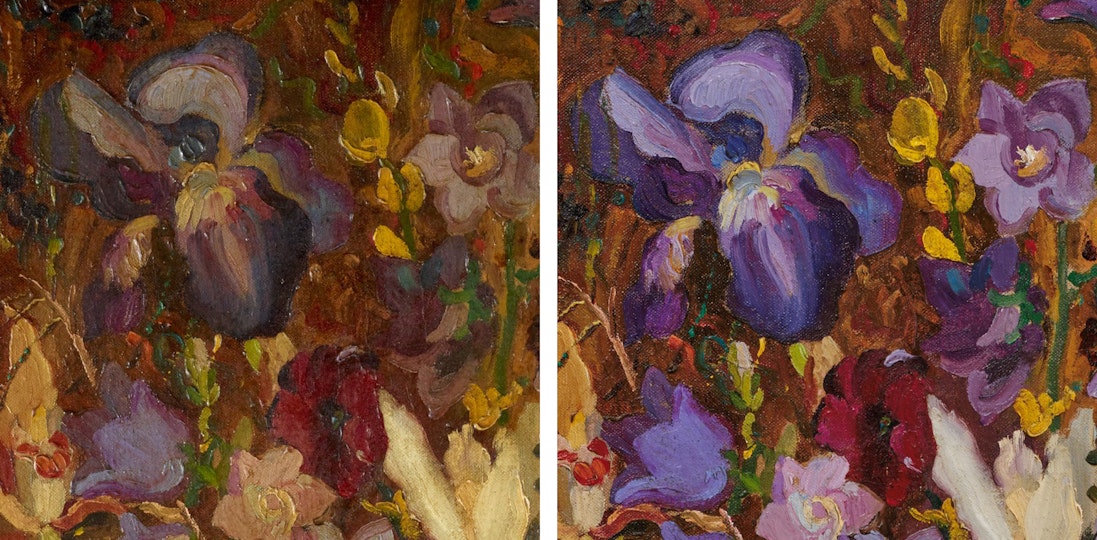
Detail from the painting, before (left) and after treatment (right)
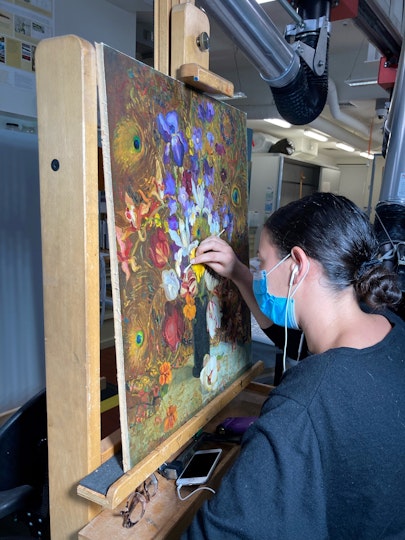
Paintings conservator Madeleine Ewing at work
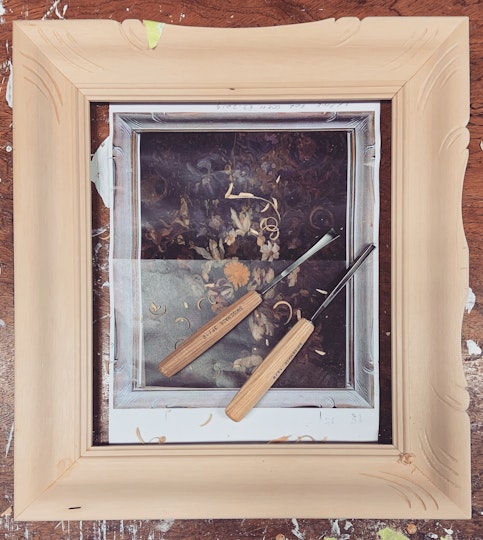
Frame in progress, showing each of the corners at different stages along with two of the chisels used to carve the frame and a mocked-up image of the painting inside the frame selected for reproduction
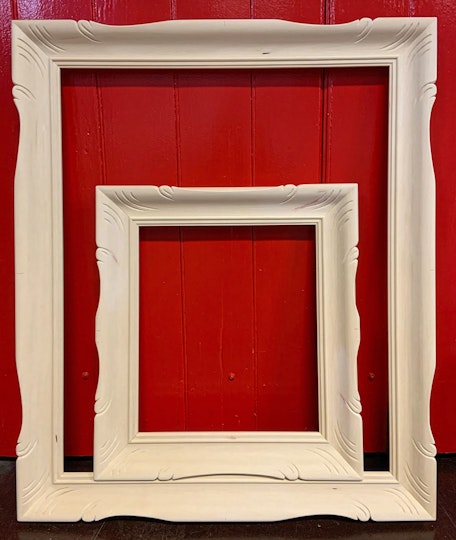
The final carved frame, before painting and finishing, along with a smaller practice sample
Meanwhile, the Art Gallery’s reproduction frame maker, Tom Langlands, worked with Australian art curators Denise Mimmocchi and Leanne Santoro to design a new frame for the painting. By searching archives and online resources, a suitable frame was found on another Coen work from a similar period to reproduce. The new frame was hand-carved in the Sydney Modern style with a painted finish sympathetic to the artist’s original palette.
The conservation treatment of Flowers with peacock feathers was generously supported by The Howarth Foundation.
You can see the restored painting in its new frame on display in our newly refurbished 20th-century galleries.
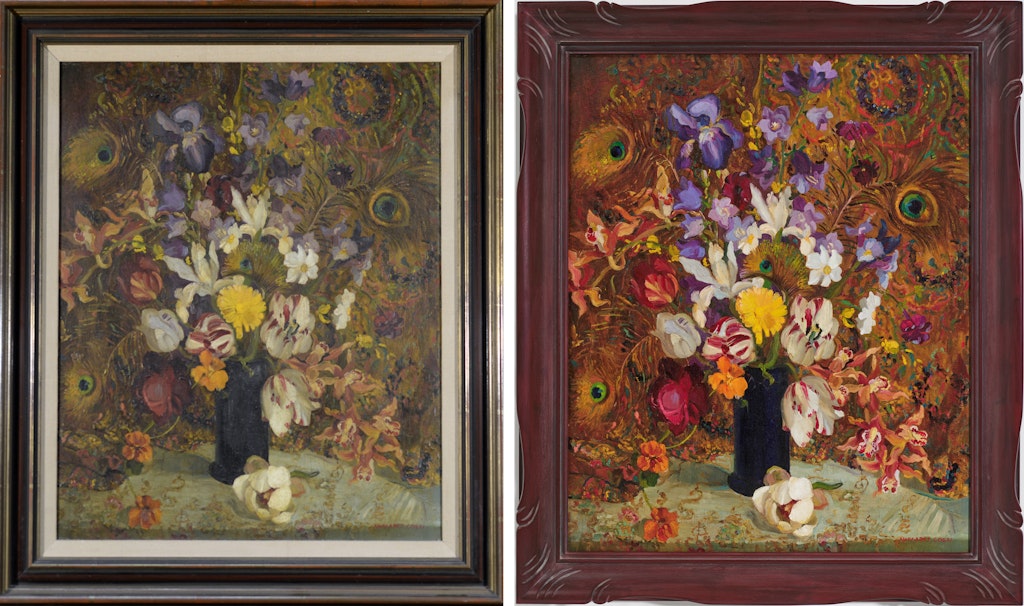
Left to right: the painting before conservation treatment in its old frame, and the restored painting in its new frame